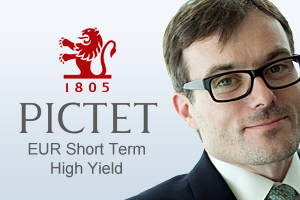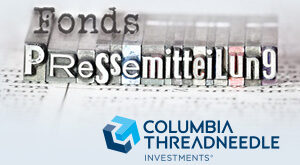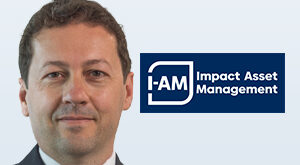
The European high-yield market posted a strong gain over the quarter, with all months being positive. High-yield borrowers benefited from the improvement in macroeconomic conditions: consumption was a positive contributor to eurozone growth in the final quarter of 2013, and, most recently, the confidence index in Italy reached a three-year peak.
Central banks remained supportive, with Yellen taking over the role of FED president and all ECB board members unanimously confirming their accommodative stance. The upshot was a reassessment of ratings by the leading agencies as they upgraded Ireland and Spain and removed the negative outlook tag attached to Italian debt. On corporate news, the acquisition saga on SFR (the French mobile phone group) is still rumbling on. Numericable and Bouygues are engaged in a bidding war, with each contender counting its political allies.
ONO was bought by Vodafone for €7bn as another example of M&A. Overall, the most significant news came from the derivatives market. The iTraxx Crossover, the European high-yield derivatives index, was expanded to 60 names in March. Consequently, the new iTraxx Crossover series started to trade above 300bps as new names are traded wider and the weight of Bs increased. In total, compared to the old series, five names were replaced, with most of them trading very tight because of M&A activities. Ten new issuers were added.
Performance analysis
The fund posted a steady performance over the quarter. Our rating allocation proved positive as Bs and CCCs outperformed BBs, the gap being even wider in the non-financial space. Higher-beta names accelerated after the hollow performance at the end of January. In contrast, the rebound in government yield acted as a headwind to BBs. In terms of sectors, healthcare and real estate topped the league, followed by the telecommunication and consumer sectors. Our selection of senior financial debt, made up of Portuguese and Irish names along with more specific situations such as Eksportfinans and the Austrian bank HAA, came out positive. Regarding our country allocation, our peripheral exposure was a positive contributor, mostly because of the strong start to the year. At the single issuer level, our bottom-up selection was a positive driver of performance as we managed both to exclude boisterous names buffeted by volatile or worsening operating performance and picked the right borrowers – some of them benefiting from the ongoing M&A and IPO activity.
Portfolio activity – overweightings & underweightings
We received significant inflows over the quarter while bonds matured, were called or tendered. As part of a recurring strategy, we invested cash in longer-dated paper, focusing on the 4-year maturity. Among others, we bought Cemex, the cement multinational; Zobele, the Italian home products maker; and, more recently, Labco, the B-rated French laboratory group. We added to our position in Befesa PIK built in the last quarter of 2013 as we purchased the security at the end of February when higher-beta bonds were marked down. We participated on a limited basis in the primary market, buying mainly Play, the fourth largest Polish telecom company, and FGA Capital, the joint venture between Fiat and Crédit Agricole. As part of a second strategy initiated since the last quarter of 2013, we selectively bought paper with short maturities or very short call dates. The former are mostly made up of commercial paper such as Greensil (linked to Abengoa group). In March we bought Faurecia, the French auto parts maker. The latter came with a very low apparent yield and hence is often overlooked by investors. Among these names, we bought B-rated logistics company Aguila. In terms of country allocation, our emerging market-related exposure remained limited.
Market outlook
Technicals remain strong owing to potential repatriation from emerging markets and desultory yields offered by the other Euro FI segments. Growth is gaining momentum in peripheral countries. Regarding credit risks, balance sheets are in good shape and investors remain compensated for default risks. The earnings season proved positive and broadly in line with expectations. All in all, prices factored in this positive environment and the decrease in downside risks is now mostly reflected in valuation. Corporate events (M&A, IPOs, earnings, refinancing) are set to remain busy and broadly positive for the asset class. This theme, which was mostly concentrated on the telco sector until recently, may expand, as evidenced by the acquisition of Campofrio and Grohe. The evolution of emerging markets is set to be a driver for the months to come and may penalise companies with operations in developing countries. First-time issuers remain a secular theme, irrespective of sectors. This theme offers opportunities, given that the new issues are not call-constrained and often come with a premium.
Portfolio strategy
Technicals remain amply supportive as the short term high-yield segment experienced steady inflows from both institutional and retail markets. The low-yield environment and tepid growth set a favourable backdrop for high yield. Over the first half of 2014, we are firmly committed to our two-pronged strategy. First, we are willing to deploy cash on paper close to a maturity of 4 years with the opportunity to buy on dips. As a second step, we are replacing cash and buying paper with short call dates, thereby allowing us to benefit from the large number of bonds which will fall into the 4-year universe over the next few months. Spreads tightened back in February at their lows, with most bonds trading above par. Therefore, the management of convexity is set to remain a driver of performance and volatility. All in all, we keep our strategic views broadly unchanged in line with our “steady hand” approach.




